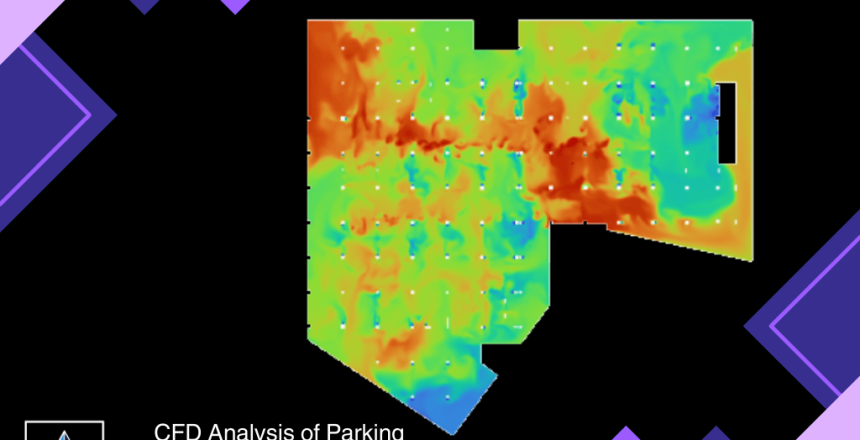Project Brief
This case study presents a comprehensive CFD (Computational Fluid Dynamics) analysis of a parking basement ventilation system. The objective was to assess air flow, velocity, and the concentration of exhaust gases to optimize the ventilation design for improved air quality and safety.
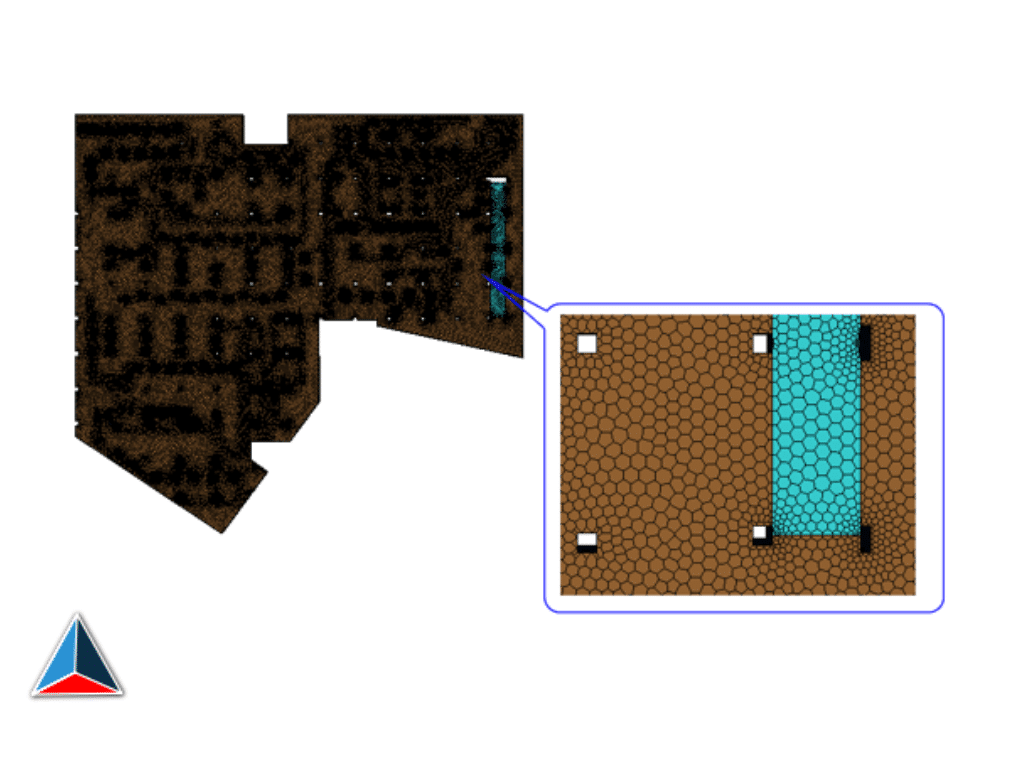
Challenges and Objectives
The client faced significant challenges with the accumulation of exhaust gases in specific areas of the parking basement. The primary objective was to identify these high-concentration zones and recommend effective ventilation solutions to ensure uniform air quality and safety throughout the parking area.
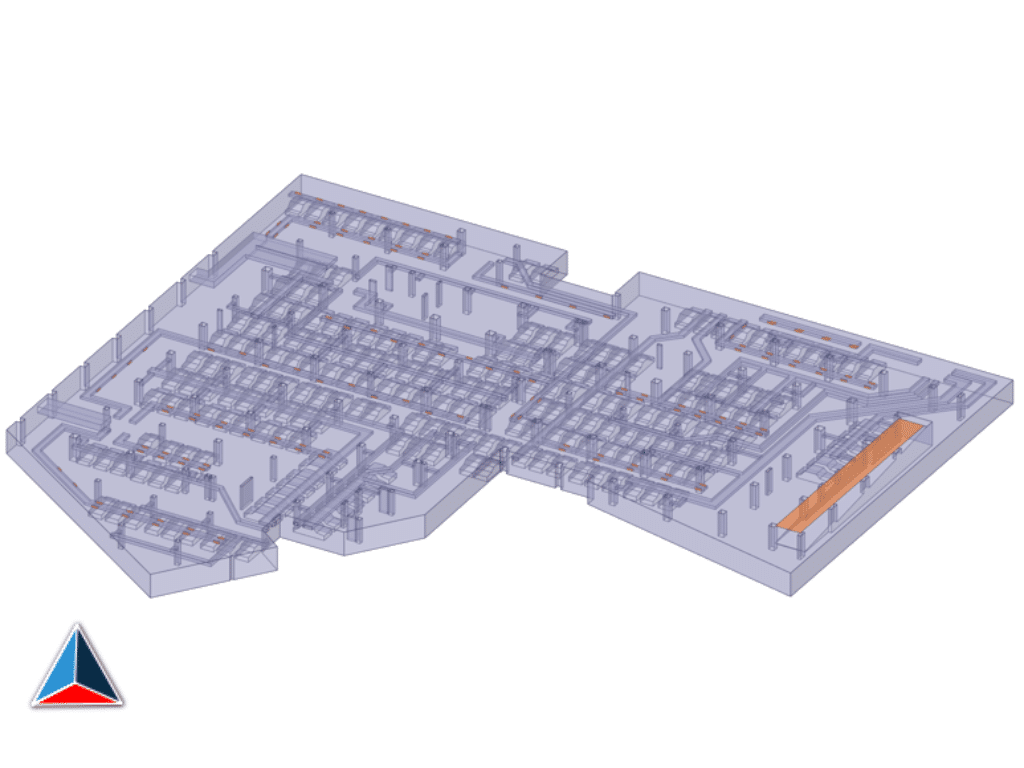
Methodology (Solutions Implemented)
Geometric Modelling:
- A detailed 3D model of the parking basement, including ramps, pillars, and ventilation ducts.
- A volume extract was generated from the model to define the CFD domain, which is the portion of space where the CFD simulation calculations are performed.
CFD Analysis:
- A three-dimensional steady state CFD analysis was conducted using specialized software to predict air flow, velocity, and the mass concentration of air and exhaust gases at different heights within the parking basement.
- The domain was discretized using a polyhex core mesh to divide it into control volumes, maintaining a minimum orthogonal quality.
- Boundary conditions were set, including a mass flow rate of exhaust gases from cars in the basement.
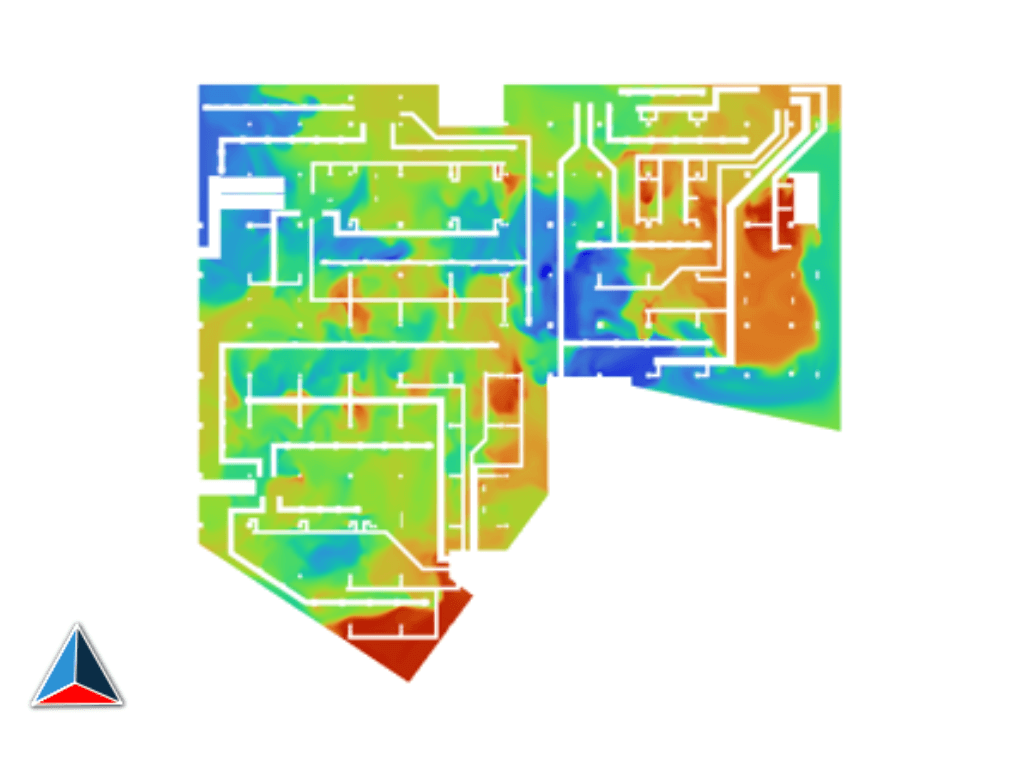
BENEFITS (RESULTS ACHIEVED)
Identification of Problem Areas:
- The analysis revealed that exhaust gases accumulated significantly in a specific area marked in red in the concentration contour map.
- Other areas of the basement showed low concentrations of exhaust gases, indicating that the ventilation system was generally effective elsewhere.
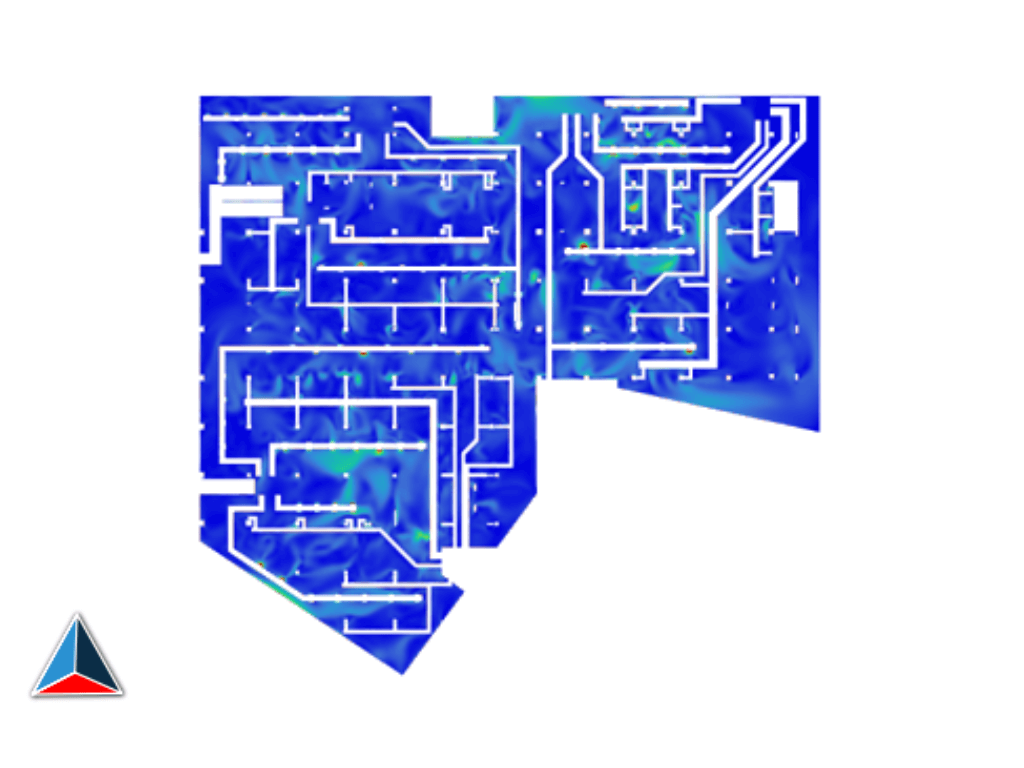
Summary of Project
This CFD analysis provided crucial insights into the ventilation efficiency of the parking basement. By identifying problem areas and recommending specific improvements, the analysis helped optimize the ventilation design, ensuring safer and healthier conditions for users. The detailed 3D modelling and advanced CFD techniques used in this project demonstrated the effectiveness of such analyses in addressing real-world engineering challenges.

